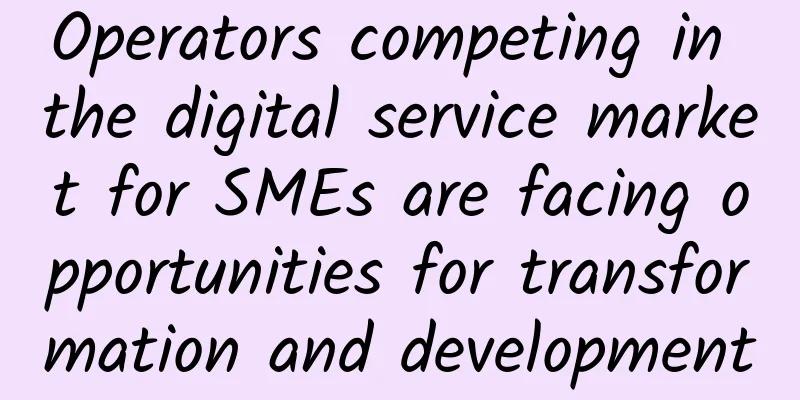5G and edge computing are a perfect match

|
Enterprise IT leaders have heard a lot about edge computing and 5G networks working together to solve problems, but how far is it from full adoption? Over the past year, the popularity of 5G connectivity services has remained strong. Shamik Mishra, CTO of Capgemini's Engineering Connectivity Business, said, "All telecom giants in the United States and Canada are actively promoting 5G technology and developing comprehensive B2B products for enterprises. In addition, we have also seen great appeal in 5G (and 4G) private networks between enterprises. Enterprise customers obviously hope to achieve business interconnection with more cost-effective wireless technology."
However, 5G facilities around the world are still in the early stages of development. This immaturity is not only reflected in coverage, but also in the support capabilities of 5G devices. David Lessin, director of technology research and consulting firm ISG, said, "5G deployment is still in its relatively early stages, and availability and efficacy are limited. Many countries have not yet completed spectrum auctions or other forms of spectrum acquisition." Yugal Joshi, vice president of research for digital, cloud and application services at Everest Group, pointed out that it is difficult for Chinese suppliers to expand their product offerings in the current business environment, which has become a major bottleneck restricting the popularization of 5G technology. Yoshi explained, "Chinese suppliers play an important role in actual deployment, and their absence will result in customers not being able to find truly cost-effective 5G solutions. In many countries, the licensing costs for 5G bandwidth are prohibitively high, and only the government and telecom suppliers can work together to solve this problem...but this is by no means easy." But from another perspective, enterprises also have the opportunity to conduct their own internal trials before widespread 5G deployments kick in. Lessin pointed out that global corporate giants can already start planning smaller, tactical trials, while more geographically concentrated organizations can carry out more strategic, large-scale 5G deployments. Lessin also mentioned that although private LTE may bring some lock-in issues, it may also be a good opportunity for enterprises to test the waters. In addition, there are multi-access edge computing (MEC) or mobile edge cloud solutions on the market that use 4G LTE and fiber connections. Dave McCarthy, vice president of research for IDC's cloud and edge infrastructure services, said, "As 5G technology matures, enterprises can now use proven methods to deploy related applications on existing telecommunications infrastructure." How to integrate edge computing and 5G?5G technology is having a positive impact on edge computing applications in enterprises, helping customers deploy receiving devices with lower power consumption but stronger computing power at edge locations. In other words, 5G and edge computing can be said to complement each other. McCarthy said, "Although the core advantage of 5G technology is to reduce network latency, it only solves the part between the endpoint and the wireless base station. Edge computing is another part of the solution by deploying computing and storage resources within the telecommunications network infrastructure, which eliminates all backhaul delays caused by centralized data centers." The current development vision is to use 5G technology to connect the next wave of smart devices and drive exponential growth of edge data. “Enterprises plan to use this data to improve operations and support customer experience,” McCarthy explained. “However, centralized data centers are clearly not able to meet the looming scalability challenges. The distributed nature of edge computing enables enterprises to leverage these new 5G-connected data sources in a more efficient and cost-effective manner.” As Stu Miniman, director of insights for Red Hat's cloud platform team, said, "If there is still an argument about whether hybrid cloud or multi-cloud is better, the popularity of edge computing has basically given the answer: looking at the location of data and applications, they will appear in many different locations in the future. When communicating with telecommunications companies, public cloud service providers or other typical enterprise customers, the discussion ideas about edge computing are often very different. When it comes to Kubernetes and the cloud native ecosystem, various technology-driven solutions are vying for the right to speak and strive to grab market benefits. Although telecommunications giants have introduced their NFV (network function virtualization) solutions into the edge computing discussion, enterprise customers also have many other options. Edge computing will become an important part of the overall distributed hybrid environment, and users need to work closely with suppliers to ensure that edge computing does not become a technology island that only carries a specific skill set." 5G technology will further expand the edge computing use cases of enterprises, helping them analyze large amounts of data on site (or on equipment) in near real time. For example, large industrial manufacturers can use this advantage to significantly improve their productivity. In the automotive field, 5G and edge technology will help realize connected and self-driving cars. "The combination of 5G and edge computing will make the potential advantages of emerging use cases and large-scale automation a reality, which is undoubtedly of great appeal to enterprise IT leaders," said Mishra of Altran. What are the future trends of edge computing and 5G?In countries like South Korea and Singapore, 5G is already almost fully available. ISG's Lessin predicts that for large countries with vast territories, such as the United States, India and Brazil, it may take several years for 5G deployment to truly benefit all citizens. This means that it will take several years for 5G to penetrate mission-critical use cases, which IDC's McCarthy estimates will increase the interest in choosing private 5G networks as an alternative to WiFi. Lessin also acknowledged that mobile operators will continue to expand network slicing capabilities to provide users with more service options. Mishra pointed out that "we expect enterprises and the public sector to continue to adopt 5G technology in the next few years." Smart homes (including fixed wireless access), smart cities, manufacturing, fleet management, logistics, entertainment and content distribution networks will become early adopters. Mishra also predicted that the full popularization of these industries may be completed as early as the end of this year. As for energy, utilities, transportation, automobiles and financial technology, the popularization time of 5G may be between 2022 and 2024. How can IT leaders prepare?Collaboration and preparation will be critical when it comes to implementing emerging 5G networks. Here are a few ways IT leaders can prepare for this.
|
<<: CFCA creates a secure all-in-one solution, Kunpeng comprehensively promotes financial innovation
>>: Out-of-the-box infrastructure connectivity options
Recommend
Stop making excuses for being conservative. Chongqing Local Taxation Bureau has already tasted the sweetness of IT innovation in the past eight years!
Editor’s Note: The Chongqing Local Taxation Burea...
From "cloud" to "fog": cloud computing will die, replaced by distributed peer-to-peer networks
When cloud computing was booming, Viktor Charypar...
[2024] Inventory of high-defense VPS merchants, US high-defense VPS/Hong Kong high-defense VPS
Continuing with the year-end summary, many friend...
It may be too early to claim that 5G package user development has cooled down
[[384501]] The three major operators all released...
Multi-process communication methods and a series of problems
[[434195]] This article is reprinted from the WeC...
Understand the Internet Security Protocol IPSec in 5 minutes
There are thousands of networks, but security is ...
New trends: eight directions of development of the Internet of Things industry
The Internet of Things (IoT) is a technological r...
Can the heavy fine on Alibaba serve as a wake-up call for the Internet giant?
The State Administration for Market Regulation ha...
How to deal with the nightmare of network outage
Reducing network outages is becoming an increasin...
Wi-Fi signals are invisible and intangible, but there are actually traces to follow
Labs Guide Have you ever encountered the phenomen...
Http code: What does 304 mean? How much do you know?
picture 1. http code 304 Not Modified The HTTP st...
Four Key Words for Successful Large-Scale Deployment of IPv6
【51CTO.com original article】In 2019, IPv6 transfo...
Exploration of 5G and edge computing applications in the post-epidemic era
AT&T and many other leading wireless network ...
GreenCloudVPS 9th anniversary, $15/year KVM-2GB/20GB/2TB/San Jose and other data centers available
GreenCloudVPS recently launched its 9th anniversa...
Report: Global 5G RAN market shows strong growth
Global demand for 5G RAN is expected to grow at a...









